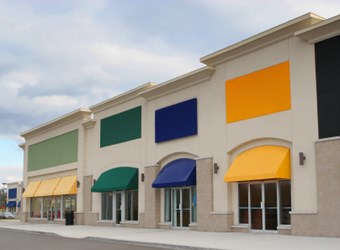Overstored Retail Sector Needs To Reduce Footprint By 1B Square Feet, Report Finds

By Christine Kern, contributing writer

US brick-and-mortar footprint needs to be reduced to curtail declining sales per square foot.
A new report from Costar has found that shopping center owners are bracing for continued downsizing this year, as retailers could shrink their brick-and-mortar footprint by 10percnet, or 1 billion square feet. With retailers like Sears, the Limited and Macy’s closing underperforming stores in malls across the country, Costar’s Portfolio Strategy group is making a bold prediction for 2017.
“Simply put,” explained Suzanne Mulvee, director of US research, retail for Costar Portfolio Strategy, “it all comes down to productivity. Retailers on average are generating fewer sales per square foot than they did during the decade leading up to the recession.” Lower sales productivity among retailers results from a variety of reasons, but the bottom line is that today fewer stores are economically viable. That is leading to the wave of retail closings and a trend of seeking rent relief from mall operators, said Mulvee.
These finding underscore the previous bleak outlook for brick-and-mortar malls, which face great challenges in finding the appropriate balance in the increasingly omni-channel retail reality, as Innovative Retail Technologies reported.
Green Street Advisors postulated that the only way that large department stores can achieve their earlier levels of productivity is to close hundreds of additional locations , a decision that would have a devastating impact on malls. And retail analyst Jan Kniffen told CNBC that while there are some 1,100 enclosed malls in the U.S. that number should closer to 700. “The top 250’ll do fine, and the rest of them are going to struggle,” he noted. The issue is that the United States is overstored.
The average retail sales used to be more than $350 per square foot, according to the analysis, but today, the same retailers are generating less than $330 per square foot. While expansion of retail space during the retail construction boom is partly to account for this decrease, so is the rise in online shopping, which continues to grow at about 15 percent annually.
“To counter these pressures and return store productivity to a band more in line with historical averages, more than 10 percent of retail space, or nearly a billion square feet, needs to be rationalized,” Mulvee asserted. “We expect store closures to increase in 2017 and rent roll downs to remain commonplace for the bottom 50 percent of centers.”
At particular risk, the analysis finds, are the “beleaguered department stores,” which continue to face weak traffic trends and rising competitive pressure on their operating performance. Some retailers have been able to stabilized, however, including Best Buy, Bed, Bath & Beyond, Barnes & Noble, and Dick’s Sporting Goods, who, Paul Morgan, a REIT analyst with Canaccord Genuity Inc. explained, “have benefitted from their competitors’ demise in recent years.”
